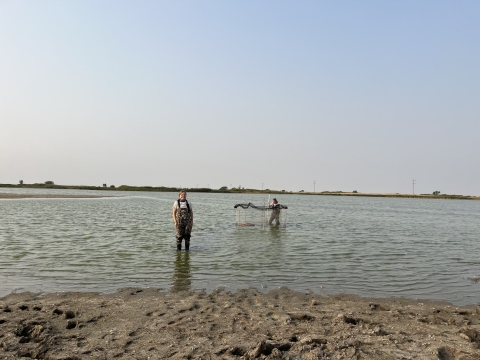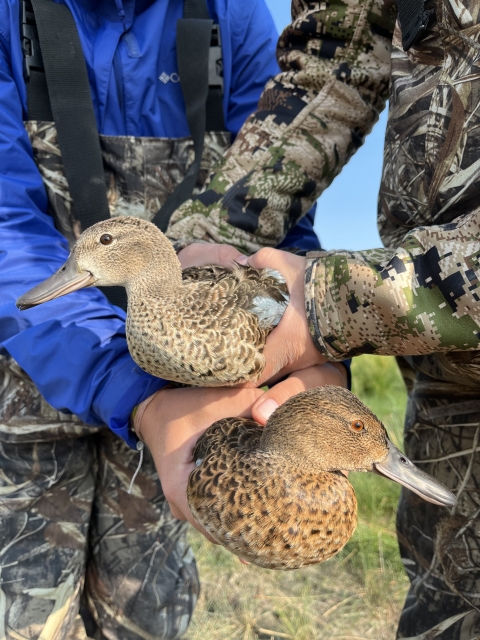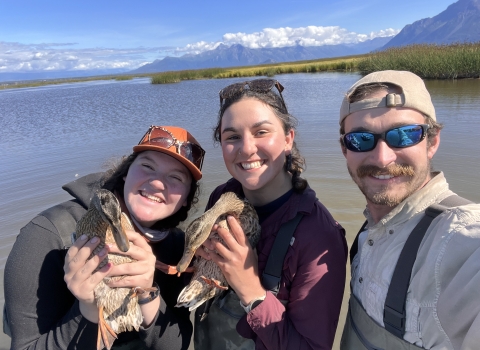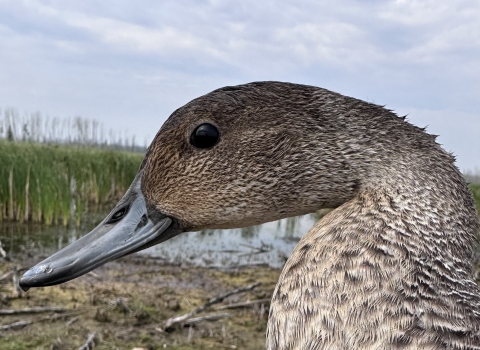The short grass prairie is an awe-inspiring place. Often underestimated and overlooked, it is frequently dismissed as somewhere that can only be appreciated by flat landers . Its the underdog of the ecosystems. But if you look closer it’s just as beautiful and diverse as can be. We encountered many sunrises and sunsets more spectacular and never-ending than an east coast ocean view, with similar characters—terns and shorebirds swooping and bobbing on the shoreline and flocks of geese dotting the horizon. If you squint, you could see the beginnings of fall in the distance and can feel the anticipation of duck season in the air.
This was my first experience on the Alberta prairie and with it my first season as a banding crew leader. It was a little daunting at first, but those worries quickly dissipated once our boots hit the ground. The Brooks crew this year consisted of Kirsten Schmidt, U.S. Fish and Wildlife Service Wildlife Biologist from Two Rivers National Wildlife Refuge and Volunteer, Kylie Tierney. We also were lucky enough to have Sarah Yates, U.S. Fish and Wildlife Service Pilot-Biologist to offer her guidance and expertise for the first week of the banding season.
The weather was HOT and arid all month with little respite from the sun and very little precipitation. The reservoir we trapped on is part of an irrigation system that was actively moving water to different areas of need. This meant an entire month of constantly moving our traps to keep up with the changing water depths. We were also vying for open spots in the cattails with the cattle and horses, who were equally as hot and tired. Despite the low water, the number of mallards on the reservoir was very promising. We set a lot of traps with high hopes to catch a banner number of mallards this season (a lofty goal for a first-time banding crew leader!). The dry conditions concentrated the ducks to the only open water around, but it also allowed the farmers to start harvesting their crops a bit earlier too. The mallards wanted nothing to do with our barley pit-stops and went straight to the freshly cut grain fields.
Despite having trouble enticing birds to our traps, we still managed to catch over 500 birds this season including 10 different species! And a truly exciting and new-to-us species was the cinnamon teal. Difficult to distinguish by wing plumage alone, we looked for a bulkier bill compared to that of the blue-winged teal and the characteristic red-eye on some.
Disclaimer: All banding, marking, and sampling is being conducted under a federally authorized Bird Banding Permit issued by the U.S. Geological Survey’s Bird Banding Lab and the Bird Banding Office in Canada.










